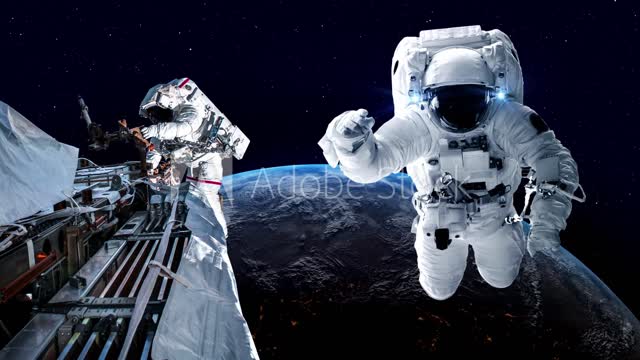Premium Only Content

People Could Live in Rotating Cones On the Moon or Mars in the Future
http://gestyy.com/edb380
Japanese researchers believe the artificial gravity structure can make off-world living plausible
BY TIM NEWCOMB JUL 22, 2022
Rotational forces can create artificial gravity suitable for human growth, at least in theory.
Kyoto University and Kajima Corporation believe a 1,300-foot-tall cone-shaped structure offers the ideal shape for artificial gravity.
The team plans to spend over 100 years designing options for using this habitat on both Mars and the moon.
The concept of using rotational force to generate artificial gravity for space habitats has been floating around since NASA called it theoretically viable in the 1960s. Now Japanese researchers hope to spend the next century building out that theory with cone-shaped contraptions that make living on either the moon or Mars gravitationally possible.
The partnership between Kyoto University and Kajima Corporation aims to create a scaled-down prototype that uses rotational forces to craft artificial gravity for a moon facility by 2050. The team plans to spend the next 100-plus years working out living conditions on the moon and Mars—and a delivery method to get folks to space.
“We propose that artificial gravity living facility is regarded as the core technology for human beings to advance into space,” the team says in a news release.
MORE FROM POPULAR MECHANICS
Octopus-Inspired Gloves
The structure, dubbed “The Glass,” uses the widely held theory that rotational forces placed on a structure can generate similar gravitational forces as happen on Earth. Anyone who’s almost lost their lunch inside the Gravitron ride at their local amusement park stop knows the basics behind the plan and the spin-inducing trick behind making this work.
The smaller the object, the faster the rotation. In the Japanese proposal, The Glass structure resembles a cone stretching 1,300 feet tall. At this size, the centrifugal force achieved through rotation to mimic Earth’s gravity sufficiently requires a full rotation of the living structure every 20 seconds. The concept is not far off from the O’Neill cylinder in the how-to space book, The High Frontier: Human Colonies in Space. Hopefully, that’s fast enough to create a gravitational pull within the facility, but not so fast that it makes living unbearable.
About Us https://bit.ly/3GUPFOa +919942258153 kvk.subadhra@gmail.com
Thank You Very Much for Sharing YourValuable Thoughts
https://82e338-f29x0o64dujso5qbv5p.hop.clickbank.net
-
 0:49
0:49
Black Box Game Trailers
3 years agoLive a Live - Official Distant Future Trailer
-
 0:44
0:44
Black Box Game Trailers
3 years agoLive A Live - Official Near Future Trailer
1 -
 1:23:27
1:23:27
Glenn Greenwald
6 hours agoNetanyahu’s Crude Exploitation of Charlie Kirk’s Death to Get the American Right Back into Line; Plus: Q&A With Glenn on Charlie Kirk's Assassination, Online Civil Discourse, and More | SYSTEM UPDATE #514
194K133 -
 4:10:25
4:10:25
Nerdrotic
9 hours ago $0.99 earnedCulture Is VITAL! Streaming BUST, Warner Bros. Buyout | Friday Night Tights 371 with Vara Dark
209K24 -
 1:02:32
1:02:32
BonginoReport
7 hours agoCharlie Kirk’s Assassin In Custody, Details Emerge - Nightly Scroll w/ Hayley Caronia (Ep.133)
192K193 -
 LIVE
LIVE
LFA TV
1 day agoKILLER CAUGHT LIVE PRESSER! - FRIDAY 9/12/25
576 watching -
 26:08
26:08
The Mel K Show
7 hours agoMel K & Ken Silva | Updates: Trump Attempted Assassination Trial, North Carolina Investigation, & Silver Bump! | 9-12-25
49.2K5 -
 1:24:33
1:24:33
Kim Iversen
8 hours agoBlaming Nick Fuentes For Charlie Kirk's Death In 3...2...1...
115K315 -
 1:08:42
1:08:42
Roseanne Barr
11 hours agoFor Charlie…| The Roseanne Barr Podcast #115
216K229 -
 12:07
12:07
TundraTactical
7 hours ago $1.63 earnedWhats The Deal With New Guns In 2025
66.9K2